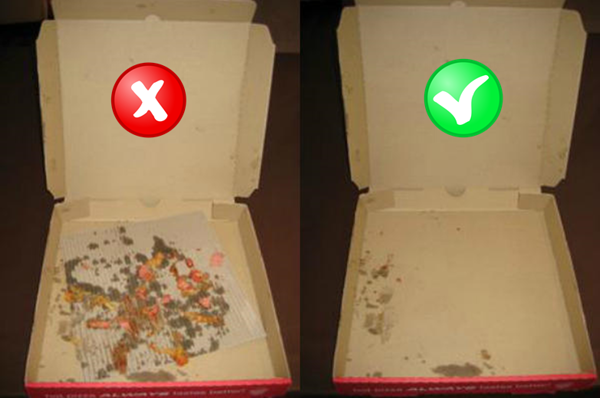Skip the Pizza Box: The Misfortune of Paper in the Fast Food Industry
Who doesn’t enjoy a snack or the occasional take-away with flavour-packed dishes to please our guts and soul? An inavoidable part of dining this way usually includes some sort of packaging and, later, waste. Nowadays, with all the talk about cutting down on the use of plastics and banning single-use plastics to prevent the pollution of waterways and oceans, it seems natural to move away from plastic bags, wrappers, styrofoam and single-use boxes to adopt more sustainable packaging. Most people are probably thinking „paper“ at this point. Well, there’s some bad news...
All the edible products we buy in supermarkets, restaurants and fast food stalls have to be contained in packaging that is safe, clean and inert – meaning that coatings, varnishes, inks and other materials contained in or on the packaging that come into contact with the food or could foreseeably do so, have to follow certain EU regulations for food contact materials. This is obviously very helpful for consumers, guaranteeing that everybody can eat uncontaminated foodstuffs.
However, such rules also have some environmental side-effects. For example, any cardboard or paper packaging that comes into contact with food (e.g. a pizza box) has to be made out of virgin fibre paper because recycled paper could potentially harbour harmful minerals and other contaminants from the paper products that were used in the recycling process, such as magazines and catalogues. When a hot pizza is placed into a cardboard box, the natural oils and grease from the pizza can seep into the cardboard and cause cross-contamination. This is why all cardboard and paper wrappers, tissues, boxes, etc. are created from virgin fibre („new paper“), thus unfortunately contributing to deforestation. Unless the fibre is responsibly sourced (like FSC or PEFC-certified forests), this is agreeably not an ideal solution.
What’s more, paper and cardboard that has come into contact with grease and natural oils is unsuitable for recycling and should not be thrown into the paper recycling bin. The grease binds well with paper fibres, whereas in the recycling process water is used to break the fibres apart to create a new pulpy mass. Grease does not mix with water and thus greasy fibres will not break down in the water mixture. Instead, a few such greasy bits could ruin the whole batch of recycled pulp, according to waste management specialists.
Pizza boxes and the like with a lot of grease on them should either be thrown into regular waste or composted – alas, if there are parts of the packaging that are uncontaminated, these are still perfectly fit for recycling. There is a bit of a grey area in terms of where the line of „contamination“ lies, so it’s good to treat every bit of waste as a unique case. For example, according to Planet Ark recycling tips website, the pizza box on the right, despite having greasy spots, is okay to be recycled with other paper, whereas the box on the left is not.
Photo: Planet Ark
So, what do we take away (pun intended) from this? We should be aware that paper and cardboard that has come into contact with oily food cannot be recycled, even though the packaging itself is produced from high-quality virgin fibre. The best take-away is to not take away in the first place, obviously, or cook more at home or eat out at a restaurant, as ceramics are still the number one most sustainable tableware. Or if you do, be particular about sorting your paper waste and try not to eat too messily! lines
lines 